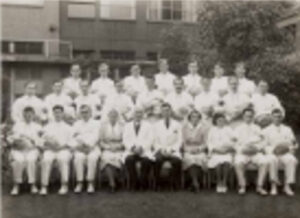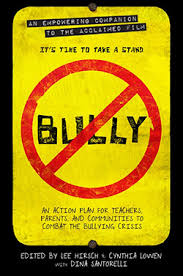Is Australia an ochlocracy?
The Ancient Greek historian, Polybius drew on the traditional theory of the three constitutions: monarchy, aristocracy and democracy, which may decay into their perverted versions becoming respectively, despotism, oligarchy and “rule of violence”.

Okhlos is Greek for “mob”. Its potential was seen briefly in the storming of the US Capitol on January 6. It goes to show how rattled the Prime Minister continues to be when he invoked the spectre of mob rule such as that; and substitutes an irritating mantra of “the rule of law” (or does he mean lore and he has not bothered to read the evidence – but then he admits he never reads anything any time).
Morrison’s retreat behind a line of feeble excuses, backed invariably by people of privilege in the end is unsustainable. One transformation occurring in Australian culture which has probably been an important undercurrent in this societal change has been the appearance of the articulate young women who have had enough of the brutal misogyny, which hides behind the veil of Australian “mateship”.
This rise in the women voicing their experience of the underbelly of Australian social life is far from mob rule; it shows the best aspects of democracy, thriving on freedom of speech and the actions of a new leadership led by at least three young women – and presumably more of them to come.
Yet another Liberal Woman?
I watched Kate Jenkins’ underwhelming performance last Sunday morning on television. She is the Federal Sex Discrimination Commissioner, having jumped ship in 2016 from her role as the Victorian counterpart which she held for less than three years. Her successor in Victoria, Kristen Hilton, is about to finish a five years’ stint and is a female lawyer who came to the position from Legal Aid and community advocacy. Jenkins was from a different legal background and was a controversial appointment by the then Victorian Attorney-General, who happened then to be Liberal. She was appointed despite the selection committee unanimously recommending someone else, and indeed a number of the selection panel resigned in protest. After all, Jenkins had form, having worked for 20 years for Freehills, which was a law firm aligned to the employers in work disputes.
There was a change of Government in Victoria late in 2014, and despite her saying that the manner of appointment had been smoothed over, nevertheless when the opportunity arose to move back to a similar position under a Liberal government it is not surprising that she did.
It is somewhat of a dejà vu situation when, as Kate Jenkins was reported saying in 2018 after some Liberal Party MPs raised concerns about bullying inside the party, she suggested the community response would prompt conservative politicians to push for change. Her comments came at the same time one West Australian Liberal Senator, Linda Reynolds said it was time for Liberal MPs to stop talking about themselves and allow the party to deal with the bullying issue internally – the rule of lore methinks.
Now Kate Jenkins has been entrusted to look at the dysfunctionality of the Parliament House workplace, encouraging people to tell all but with no authority to name names. Initially, the Prime Minister had assigned one of his female colleagues, but after all what do you have a sex discrimination commissioner for? It seemed somewhat of an afterthought, but in the blokey culture in which the Prime Minister finds himself comfortable, it is unsurprising. After all, in this culture Kate Jenkins has to examine, the Office of Women has barely been heard. She has to report by November.
However, one suggestion that the office appointment be made by some independent body is ludicrous. Most ministerial offices have departmental liaison officers in any event. In many workplaces, one needs a police check. The problem lies in the fact that there are just too many parliamentary staff, the employing Minister needs to be confident of their loyalty and their moral compass. Cut back on staff numbers and get rid of the condottiere culture – 95 per cent of the time hanging out and five per cent ultimate brutality in the case of the Mafia. Applying that to the parliamentary office is boredom, gossiping and bullying – in varying degrees. Occasionally, they may contribute a snippet of relevance to portfolio deliberations.
 As for the percentage of sexual harassment and assault admixed, that is surely the major task for Kate Jenkins. In her favour is that she seems to have been involved in sport, in particular the Carlton Football club. That probably has given her an insight into the blokey culture which, fuelled by alcohol and drugs, can become a very unpleasant scene.
As for the percentage of sexual harassment and assault admixed, that is surely the major task for Kate Jenkins. In her favour is that she seems to have been involved in sport, in particular the Carlton Football club. That probably has given her an insight into the blokey culture which, fuelled by alcohol and drugs, can become a very unpleasant scene.
However, the most obvious recommendations are that all cases of sexual harassment and assault they be immediately referred to the police and that Parliament House have a 24-hour counselling service on hand for the victim. The first harasser charged should be refused bail and have the case held over for a few months. This would be somewhat of a deterrent, as well as the name being on the public record instead of appearing nowhere but everywhere on social media – a case of “porterisation”.
Insurrection
When I was a medical student, there was only one medical school in Victoria. It was a traditional medical course, which had its roots in the Great Britain “honorary” system and Nightingale wards.
There was a vision of medical students in the mould of the 1950s series of “Doctor in the House” books, which were popular and vaguely true of a vanishing world.
We “fresher” students had a term of botany to start us in the world of human biochemistry, physiology and anatomy and then moving on to years in clinical medicine where we were introduced to our human pathology. However, that pathology included an introduction to the world of the medical hierarchy, enmeshed in a different pathology. It was a world of innate privilege. For instance, from my boys only private school about ten per cent of the students in my first year were old boys from my school; and most of those had been with me at school the previous year. Therefore, there was an easy familiarity when we all gathered for our first term. None of the guys then from my school were more than acquaintances, as the friends that I had at school tended to be on the “arty fringe”, not on the treadmill of a year 12 two maths, physics and chemistry.
Despite having a headmaster enlightened for his time, having a factory to ensure a stream of first class honours and the academic superiority of the school, in the end, the school encouraged privilege and misogyny. After all, it was still a school where the boarders were banned from playing hockey, because it was a sport played by girls. Then there was the cruelty, both physical and mental. Until just before I entered the senior school, the prefects were allowed to cane, which some have reported did it with relish.
 The masters – note male – were allowed to cane. I remember one time when I was framed as the instigator of a class riot and was caned in front of the class with a large wooden compass. This old boy had played tennis at championship level and his backhand was still a powerful weapon. Oh, such a wondrous time. And there we all were on the threshold of a career of caring and compassion.
The masters – note male – were allowed to cane. I remember one time when I was framed as the instigator of a class riot and was caned in front of the class with a large wooden compass. This old boy had played tennis at championship level and his backhand was still a powerful weapon. Oh, such a wondrous time. And there we all were on the threshold of a career of caring and compassion.
There were few women then doing medicine, about 25 per cent at that time. One of them was a feisty blonde who as child had migrated with her parents and elder sister to Australia from Central Europe after the war. She attracted attention because she was always impeccably dressed, even down to her use of Mitsouko as a trademark, very good looking with a strong sense of morality, and willingness to engage men as equals. This frank engagement was often misinterpreted. Because she was a fraction over 160cm, there was tendency by some to see her as a doll, unable to resist the fragrance of the male pheromones. Nothing was further from the truth. One professor, who had the reputation as a Lothario tried it on, got nowhere very quickly and punished her with a supplementary examination in his subject, which she ultimately passed. The professor wisely absented himself from this further examination.
There was the instance in one of those crowded raucous medical student parties, when a drunken male lifted her up and tried to sling her over his shoulder. Others intervened and he dropped her. In a flash she had flattened him with a fist which travelled from below knee level and he, helped by an inebriated lurch forward, copped the full intensity of the blow. She never gave any quarter; a remarkable woman (in the 1960s she was a pioneer in and passionate advocate also of early childhood education) who followed up with a successful career until she suddenly decided that she had had enough of a male-dominated world and retired. It was a pity.
The white shoe brigade
In our fifth year we had to undertake 10 weeks in the Women’s Hospital where during that period were to do twenty deliveries on our own, including two instrumental deliveries. That was one roster; the other was the episiotomy roster, where we had to go and sew up the incision made in the perineum when extracting the baby to avoid a tear. In those days it was a regular occurrence and we medical students had to do the suturing repair. It was an introduction to being on-call at night.
 We were not to leave the premises without permission over the ten weeks and to compound this imprisonment, we had to wear all white – all white short coats, white shirt, white tie, white pullover, white trousers or skirt, white socks, white shoes. The one luxury we afforded ourselves when we were far enough down each list not to be immediately bothered being called was to go over the road to the Martini Bar at about eleven o’clock, have a veal parmigiana and watch a TV Western called The Rebel-Johnny Yuma.
We were not to leave the premises without permission over the ten weeks and to compound this imprisonment, we had to wear all white – all white short coats, white shirt, white tie, white pullover, white trousers or skirt, white socks, white shoes. The one luxury we afforded ourselves when we were far enough down each list not to be immediately bothered being called was to go over the road to the Martini Bar at about eleven o’clock, have a veal parmigiana and watch a TV Western called The Rebel-Johnny Yuma.

The Professor of Obstetrics and Gynaecology was an owlish misogynist who had crawled up the pole of success by judicious naval service, membership of the Masons, a fortuitous lack of interest in the professorial post when he applied, allowing him to slide into academia without much, if any academic qualification. Then there he was, a graduate who had needed supplementary examinations to pass and was forced to undertake his first post graduate year at Tennant Creek, on the brink of a stellar career. He had a ruthless streak which, coupled with a few shrewd appointments, provided him with an aura of success. However, his most memorable utterances related to a distressed pregnant woman who came to him threatening suicide. His response – as recounted by him to us fifth year medical students – was that he showed her the window of his office and invited her to jump. The fact that she did not just proved triumphantly his insight into women. To our shame we just absorbed what he said and did nothing.
However the atmosphere, because of the activities of his lieutenants called “First assistants”, became so repressive with them singling out a Malayan Chinese student for special punishment. That was the trigger point. We students declared that enough was enough and petitioned the Professor in a written document signed by all but one of the cohort. We thought it an impressive display of solidarity, and the First Assistants were clearly rattled. Nothing happened immediately and then we felt the full force of the Professor; he isolated those he thought were the leaders and suddenly the rebellion melted away. After all, this guy could have a serious effect on careers. He enforced the punishment, “gating” the whole student cohort. This was eased as it gave the First assistants a “humane role” in releasing us from our imprisonment.
In the end a few of us, but particularly myself as I was by then Chair of The Medical Students Society, had a rough time, even though it was almost 18 months later before we faced the examiners. That is another story, but I evaded the trap – and passed, admittedly near the bottom of the year.
As to the fate of the petition, it was never seen again, except there was a second copy – signed similarly by the same set of students. I have it in my possession as an example of what he probably thought was an attempt at mob rule, but a useful document that can be added to his “in memoriam”.
After all, he was not the only disgraceful example of this disrespect for women. It was rife among obstetricians back then, but now change has occurred, especially with more female role models in the field with exemplary professional behaviour.
Then, as students, we accepted the mores, such as lining up to do an internal examination on a woman who had supposedly consented to the invasion. Some of those in my cohort, who signed the petition, became well-respected obstetricians and gynaecologists.
As for the Professor, he was knighted and acquired a trail of honorary academic degrees from all over the world, had a building named after him at one of the teaching hospitals in Melbourne and died as a revered misogynist in 1983.
IVF – Great Expectations?
The role of IVF as a ‘cure’ for infertility was crucial to the discursive construct of law as a barrier. ‘If medical advancements can help these people, it is not the role of Parliament to prevent it. Science was posited as a progressive force, aligned with nature, or perhaps with natural progress, which parliament should not impede. Paradoxically, then, law becomes both the problem and the solution as it ushers in a new era of reform.
In April 1988, my team reported to the then Commonwealth Department of Community Services and Health on the status of in vitro fertilisation (IVF). The Department prepared a summary report because some of the data we collected was confidential. The Departmental summary made the comment that the good data collected by my team “cannot be matched with good output data collected by the National Perinatal Statistics Unit (NPSU). (I use the term IVF, although ART, assisted reproductive technology, of which IVF is one, may now be more commonly used.)
To put our consultancy into perspective, the first in Australia and when 2503 pregnancies had occurred with 1851 live born infants. That was the raw statistic, and we looked at data from 1986 onwards from 15 units across Australia.
It was a time when the tabloids would pounce on any multiple pregnancy as though non-viable octuplets were in some way a blessing from God, a scenario which some members of the Roman Catholic Church applauded. It was just an instance of appalling practices, loading the woman up with fertilised eggs, on the grounds it was more likely one would be implanted.
I entered this review in a very positive frame of mind, because I knew Professor Carl Wood, who was part of the vanguard in the introduction of IVF.
The one invariable feature when we arrived at any of the units was the pictures of beaming bonny babies, so even from the early days the public relation teams were in the picture, so to speak.
Then our team confronted reality. The processes involved in IVF mean that the woman goes through a harrowing experience to conceive. Then there was the waiting period to know that the process was successful. There was some difficulty initially in finding the actual success rate. The success rate was a live baby in the basket – and multiple pregnancies counted as one. Full stop.
It was a problem in the early days and in one State where there was an “IVF cowboy” at the helm, because of his propensity to place multiple eggs into the uterus for implantation. Of the 55 live births following IVF, 27 per cent were multiple births compared to 0.01 per cent of the total. There were 15 multiple births due to IVF of a total of 264 multiple pregnancies. Five sets were triplets born from IVF pregnancies during the time when there were only a total of 15 sets of triplets born across Australia.
The problem in assessing the “live baby in basket” against the number of IVF cycles was not made easy, because those who ran the IVF clinics were not the same team as those who delivered the women. There was thus no uniform data collection. This presented a difficulty since there were a number who might have been assessed as pregnant but who actually had a chemical pregnancy that did not progress. This was another practice uncovered at the time – to count a rise in the hormone bHCG as a “successful IVF treatment” – a fancy bit of data manipulation since many never got beyond this stage. In the absence of any reliable data collection, it was left to us to make the best estimate.
We noted that even at that time of our review four women had already undergone 13 treatment cycles without becoming pregnant. Considering the stress that one IVF cycle entailed, failure was a nightmarish experience – and 13 times! Added to this was a cohort of infertile men whose failure to acknowledge their own infertility created other problems. With the intracytoplasmic injection of one spermocyte into one oocyte, it always seemed to me the height of arrogance that a scientist could pick the right sperm for the right oocyte – a form of cellular eugenics. Yet in one way what could one expect. IVF was the product of veterinary medicine.
I came out of the experience of our consultancy rather differently from the person who was commissioned to undertake this review. Our reports received a mixed reception. For the most part of the succeeding 33 years, I have written nothing. Nevertheless, I have been disturbed by commercialisation of the expectations of women increasingly delaying their families – for many reasons. There is an increasing number of women in their forties seeking IVF treatment when they have certainly reached the fertility savannah if not the desert.
I was prompted to write by the following comment:
Going through IVF is the worst thing that has ever happened to me physically and emotionally. The financial costs made the whole thing far more stressful and limited how many attempts we could have. I know of people who have sold their houses and given up everything to pay for cycle after cycle to have the child they always dreamed of. What’s so infuriating, though, is that it absolutely does not have to be this expensive. This is what happens when medical care is run for private profit instead of public good.
At the time we undertook the review it was well before IVF became a hedge fund commodity like so much of health care now. One of the major reasons for the 1988 review was to understand the costs, and the report was inter alia a masterpiece in cost accounting (because of the involvement of Dr Robert Wilson).

IVF is now big business. It would be a brave politician or Department to establish an independent review as ours was. It is very difficult to work out the real success rate; it is in the interest of the industry to conflate the success rate. But the more important issue is that this is an industry that is in a position to prey on those who are so willing to give up so much for “a baby in the basket”.
The problem I have is “what is truth?” I could not believe this nonsense written by one of IVF specialists. His thesis that increasing IVF could replace falling migration levels is backed by this following burble:
Arguments based on a sense that IVF is futile for women in their 40s also hold little water these days. Twenty years ago, when I first began training in IVF, pregnancies in older women were a rarity. Yet 2017 data from Australia show that, for women aged between 40 and 44 using their own eggs, the cumulative live birth rate is well over 10% for the first cycle of IVF treatment and runs to as high as 40% by their eighth cycle of treatment.
The eighth cycle of treatment, I ask you! The cumulative live birth rate is simply, “if I keep going, what are my chances of pregnancy if I have another cycle, or another two cycles, or another three …”. Dangling a 40% success rate in front of a desperate person who is prepared to sell the house …. those who are running IVF clinics are in a position of power -the sort of power men use to manipulate women.
Has the misogyny which once burned bright among obstetricians and gynaecology not been extinguished? Anybody making statements as airily as that suggests that it has not. Statements as that above should be tested urgently by another independent review.
I remember one piece of data that stuck in my mind. It was an early study that compared women who had undergone at least one IVF cycle and then gone back to conventional ways of procreation as those who had persisted and delivered an IVF baby. It was about the same – nine per cent.
This is another statistic that would be worth reviewing now.
Any advances on that?
Mouse Whisper
Witnesses under cross examination, however mighty their stature outside the courtroom, very soon became meek and mild and well-behaved in his hands. If they did not—if they paltered with him, or evaded his questions, or did not do justice to their testimonial responsibilities— the smell and sight of cordite smoke soon drifted into the courtroom.
I have never read a more flower-encrusted definition of bullying – in this case a description of the late Tom Hughes’ court antics.
These words are by Dyson Heydon, in a book review of Tom Hughes’ biography, in turn authored by one of those guys my mousemeister knew at school.
Attorney General Porter or his successor should not palter over the Dyson Heydon sexual harassment report in the wake of the Chief Justice’s condemnation last year of him. Porter received a separate Departmental report on 25 February; and to all intents and purposes it is unsurprising he has done nothing since.

